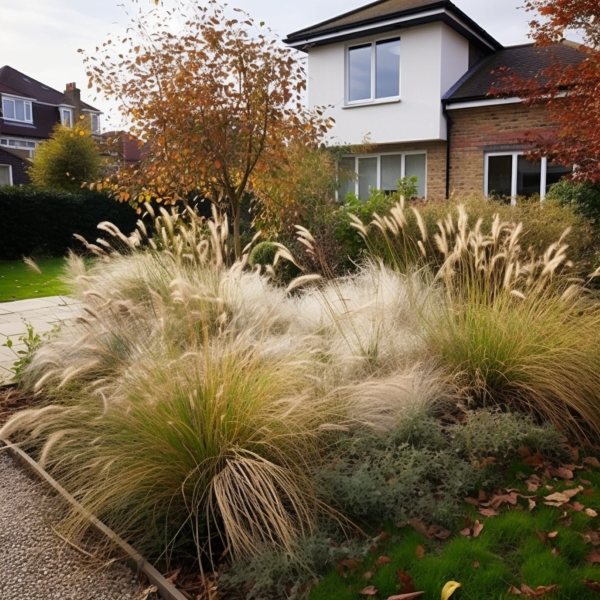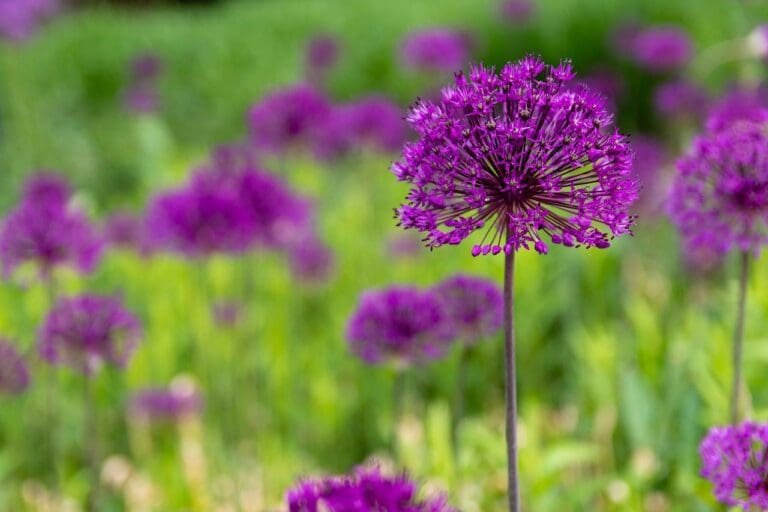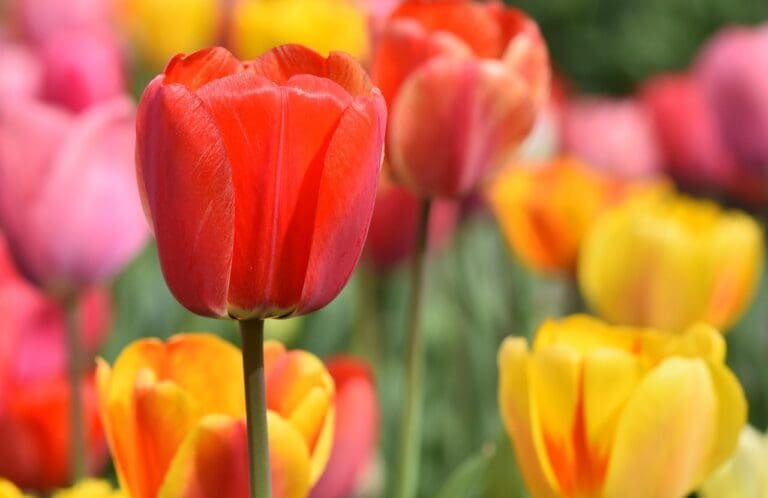Ornamental grasses are the unsung heroes of the naturalistic garden, offering both charm and function in spades. Whether it’s filling in the gaps between plants with a soft matrix layer or standing tall and proud with striking architectural shapes, these graceful grasses add texture and movement to your outdoor space.
In this article, we’ll explore 10 of the best ornamental grasses that could be the perfect addition to your naturalistic garden.
10 Best Ornamental Grasses for Your Naturalistic Garden
- Stipa Gigantea
- Stipa Tenuisima
- Calamagrostis x acutiflora ‘Karl Foerster’
- Molinia Caerulea (Purple Moor Grass)
- Festuca Glauca
- Descampsia Cespitosa
- Hakonechloa Macra (Japanese Forest Grass)
- Panicum virgatum ‘Shenandoah’
- Sesleria Autumnalis
- Carex (Sedge)
Top Tip
When selecting ornamental grasses for your garden, consider not only their aesthetic appeal but also their growth habits, compatibility with existing plants, and year-round interest to create a cohesive and vibrant garden that thrives in every season.
This post contains affiliate links which means we may make commission from any qualifying sales with no extra cost to yourself.
1. Stipa Gigantea

Stipa Gigantea, also known as ‘Giant Feather Grass’, is a dramatic presence in any garden. Its large spiky clump and long stems create a striking display as the oat-like flowers appear to float above other plants. Plant individually in different areas for rhythm and structure in sunny and well-drained soil. In spring, wear good gloves to comb through and remove dead foliage and old flower stems. If the clump becomes too large, it can be divided.
Overall Height: 150 – 200 cm
Overall Spread: 50 – 100 cm
2. Stipa Tenuisima
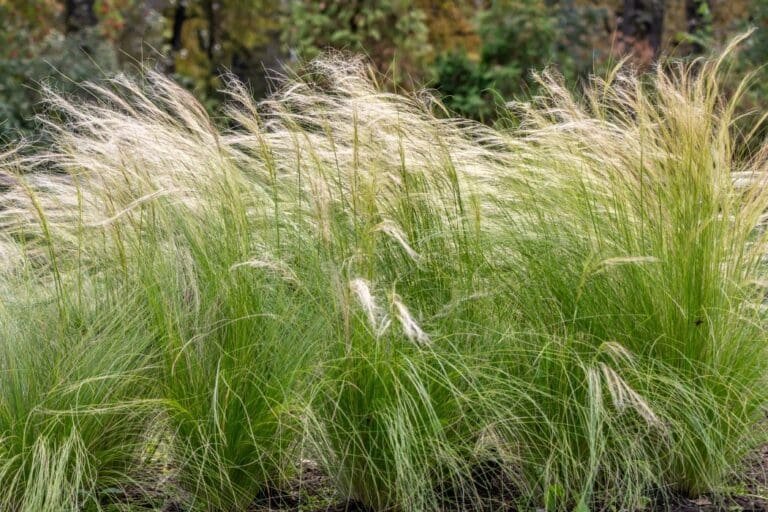
The smaller and ethereal Stipa Tenuisima is a dance of feathery tufts that sway gracefully with the wind. It adds movement and a soft haze to any naturalistic garden scheme. Low maintenance and preferring well-drained soil in sun or partial shade, just comb through gently to remove dead foliage in the spring.
Overall Height: 60cm
Overall Spread: 30cm
3. Calamagrostis x acutiflora ‘Karl Foerster’
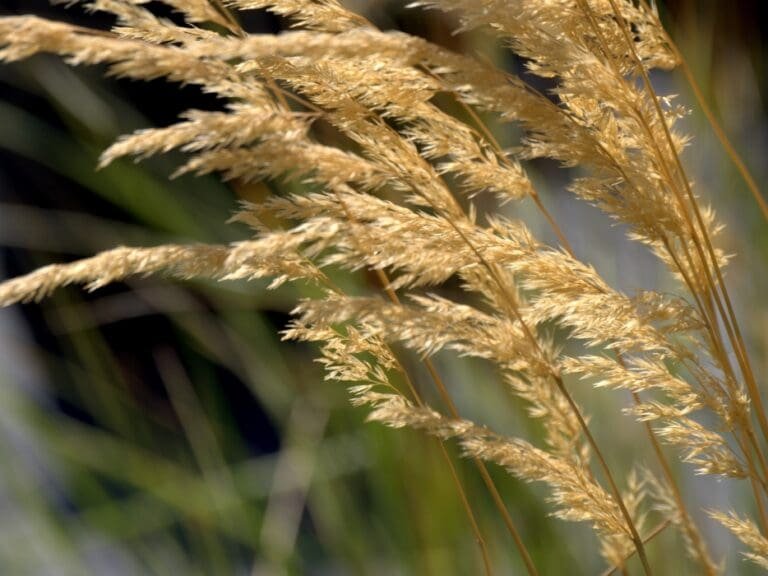
Calamagrostis x acutiflora ‘Karl Foerster’ is known for its elegant vertical form, providing structure and beauty through autumn and winter. The feathery spires turn golden in the fall, lending a warm touch. Easy to grow in well-drained soil and sun, simply cut back in spring to 15cm for fresh growth.
Is it the best ornamental grass? check out why we think it might be here.
Overall height: 170cm
Overall spread: 60cm
4. Lagurus Ovatus ‘Bunny Tails’
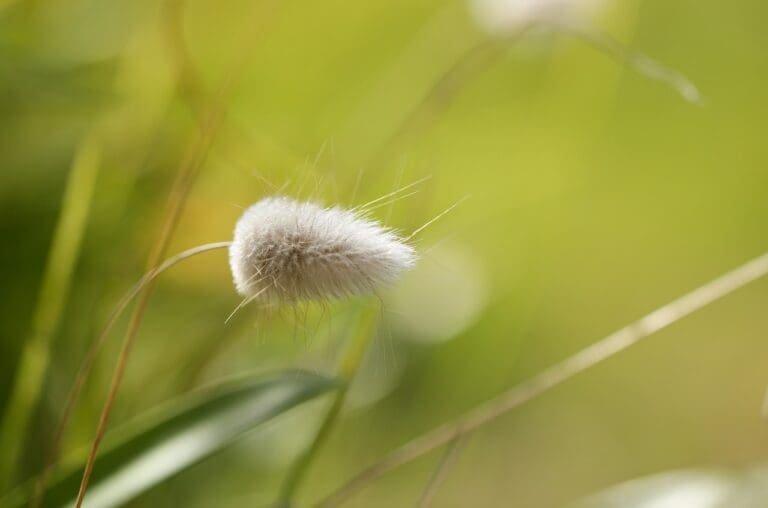
As adorable as it sounds, Bunny Tails adds character with its dense, fluffy seed heads that slowly turn a creamy white. Sow in situ in spring, in well-drained soil in a sunny position, and enjoy the fluffy charm. The seed heads can even be dried for arrangements.
Overall height: 40cm
Overall spread: 30cm
5. Festuca Glauca
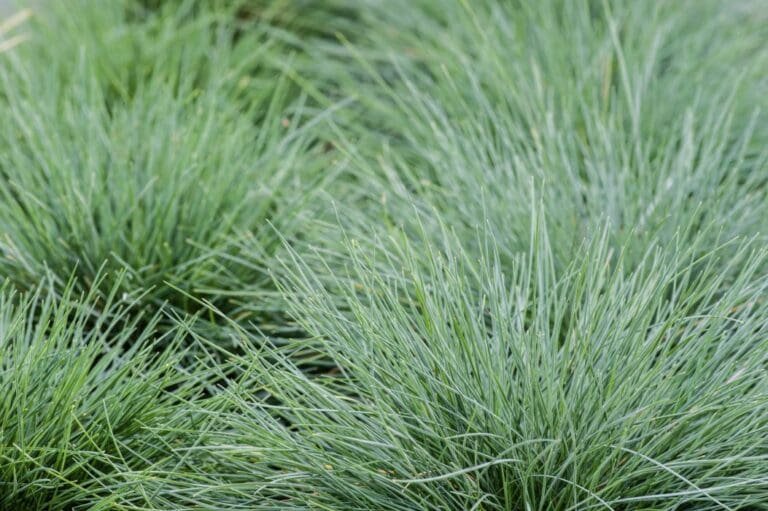
Festuca Glauca offers a stunning contrast with its silvery-blue foliage. A great ground cover, especially along pathways, it brings year-round interest. Maintenance is a breeze; shear in spring to maintain its form and divide if needed.
Overall height: 30cm
Overall spread: 30cm
6. Pennisetum ‘Hameln’ (Chinese Fountain Grass)
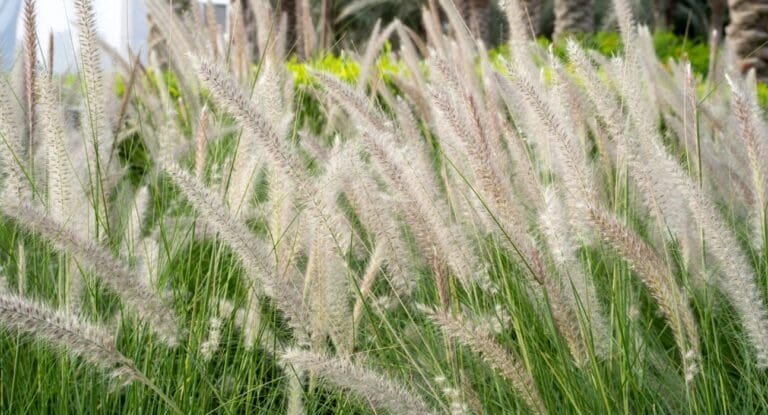
Chinese Fountain Grass is a character-rich grass with bottle-brush flowers hinting at soft pinks and purples. Bright yellow foliage in autumn adds another level of appeal. Thrives in sunny spots with good drainage and is great in pots too.
Overall height: 70cm
Overall spread: 50cm
7. Hakonechloa Macra (Japanese Forest Grass)
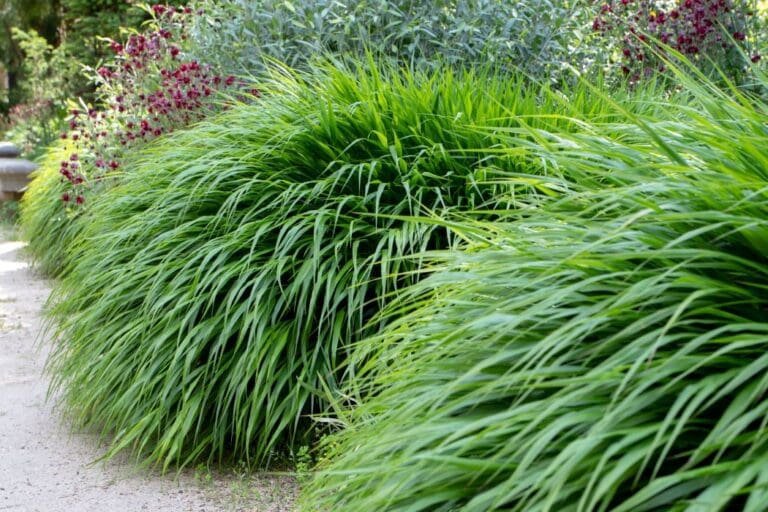
This unique grass is versatile in both sun and shade. Its bright green, rippling mounds arch elegantly and look fantastic under trees or along pathways. Low maintenance, simply divide and remove spent foliage in early spring.
Overall height: 60cm
Overall spread: 60cm
8. Panicum virgatum ‘Shenandoah’
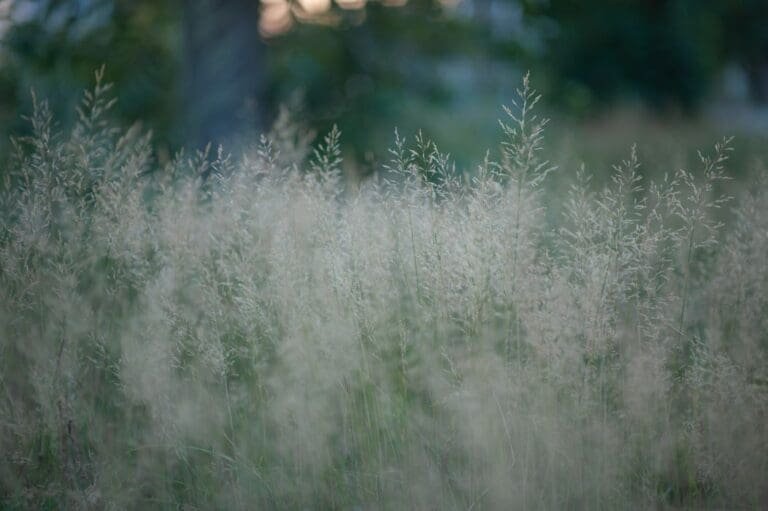
Shenandoah is a visual treat with upright green blades and deep red tips. The hazy flowers add an airy touch in autumn. Thriving in sunny spots with well-drained soil, it should be cut right back in early spring and can be divided if necessary.
Overall height: 90cm
Overall spread: 70cm
9. Sesleria Autumnalis
A robust and semi-evergreen grass, Sesleria Autumnalis offers year-round form and summer white flowers. Perfect as a ground cover, especially en masse, it prefers well-drained soil in sun or partial shade. Cut back in spring if needed.
Overall height: 50cm
Overall spread: 50cm
10. Carex Testacea ‘Prairie Fire’
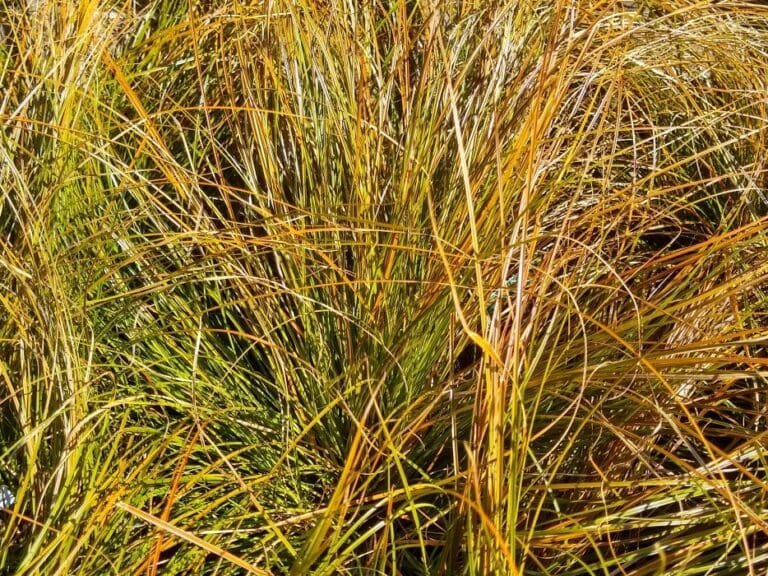
Carex ‘Prairie Fire’ stands out with delicate arching foliage that changes from green to warm bronze. Providing colour through autumn and winter, it enjoys sunny spots with good drainage. Divide and cut back in spring to keep it fresh and lively.
Overall height: 50cm
Overall spread: 50cm
Each of these ornamental grasses offers unique beauty and functionality to any naturalistic garden. By understanding their preferences for sun, soil, and care, you can create a garden that dances and thrives throughout the seasons.
Using Ornamental Grasses for Winter Interest
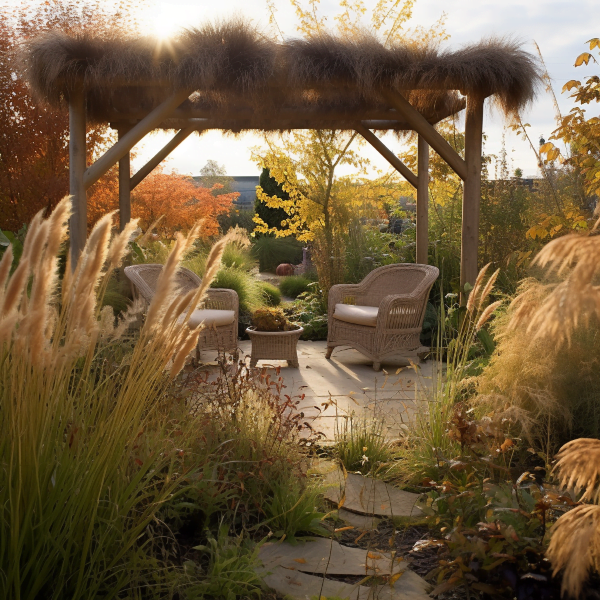
Ornamental grasses can be a gardener’s secret weapon for sustaining visual interest throughout the winter months. Their resilient nature and diverse forms allow them to stand tall against harsh weather, offering texture, movement, and sometimes even colour when most other plants have retreated into dormancy.
By selecting grasses known for their winter appeal, such as the graceful Calamagrostis or the vibrant Carex, and positioning them thoughtfully within your garden landscape, you can create eye-catching focal points.
Consider pairing them with evergreen plants or winter-blooming flowers, allowing their architectural shapes to cast striking silhouettes in low winter light, and their rustling sounds to add an auditory dimension to the garden’s tranquillity.
Leaving the grasses unpruned until early spring not only maximizes their visual impact but also provides shelter for wildlife, creating a garden that is not only beautiful to look at but also ecologically beneficial during the cold winter months.
Related Posts
Frequently Asked Questions
Q: What is the easiest ornamental grass to grow?
Many ornamental grasses are known for their ease of cultivation, but Festuca Glauca is often cited as one of the easiest to grow. It’s adaptable to various soil types, doesn’t require much maintenance, and is generally pest-free. Its attractive blue hue adds unique colour to the garden as well.
Q: Do ornamental grasses last all year?
Ornamental grasses do indeed last all year, with many offering year-round interest. While some may die back during the winter and regenerate in spring, others remain evergreen. Even those that turn brown in winter can provide architectural interest, texture, and wildlife habitat. Their adaptability and diverse forms make them valuable garden plants for all seasons.
Q: Is Stipa Tenuissima an evergreen?
Yes, Stipa Tenuissima is classified as an evergreen grass. Its feathery, narrow tufts remain attractive throughout the year, and it continues to provide movement and softness in the garden even during winter. However, it’s worth noting that the appearance can vary based on local climate conditions, and in some areas, it may take on a semi-evergreen habit.

